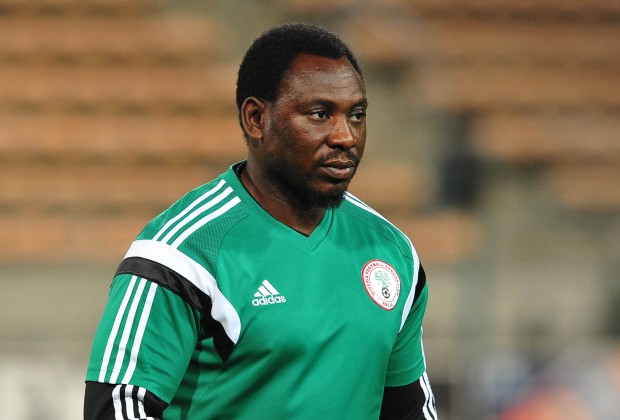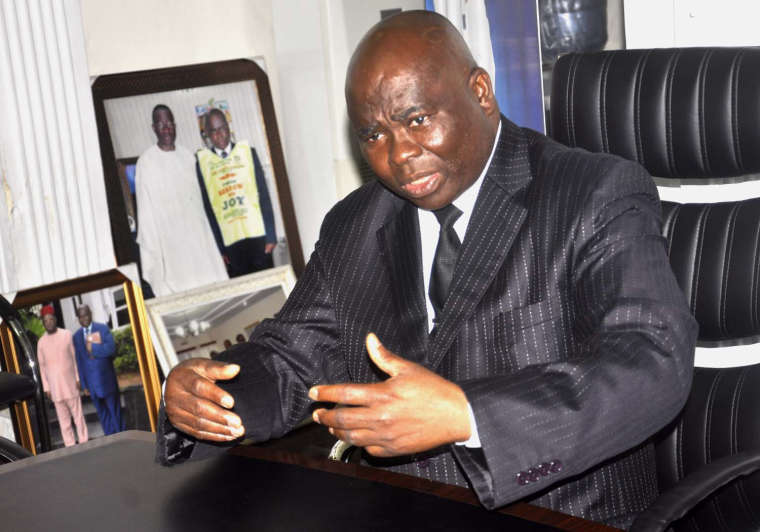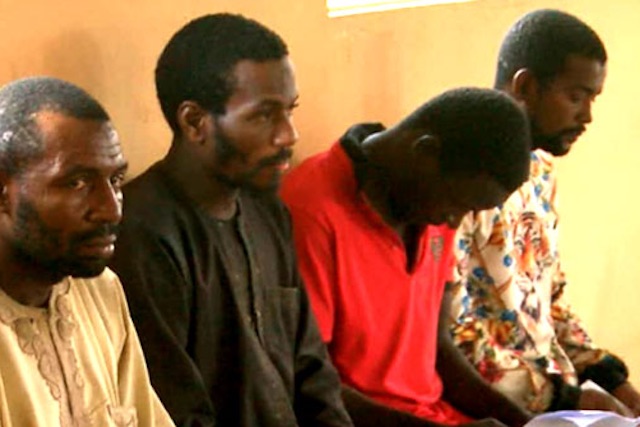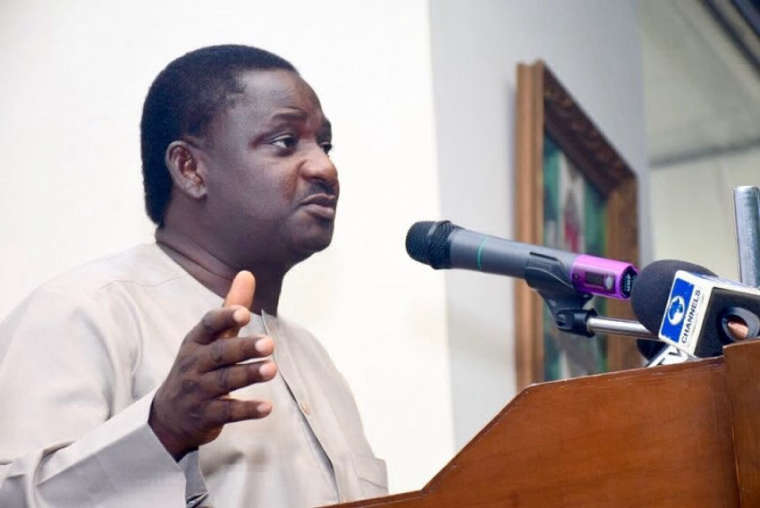Groups
-
david-manglideposted in Primary 5 • read more
Subject: English Comprehension
Topic: Responsible Citizen
Duration: 40mins/period
Reference Material: Macmillan Primary English Course, 5
Previous Knowledge: Pupils are familiar with answering comprehension passage
Objective: At the end of the lesson, pupils should:
- Pronounces and spell the new words
- Form sentences with the new words
- Read and answer the questions from the comprehension passage
Content:
- Explain 2. Compound 3. Assembly
- Chance 5. Citizen 6. Museum
Form Sentences with the New Words
- I was on the assembly ground when the public holiday was declared
- My father praised my mother for preparing a delicious meal
- The policeman failed to listen to her explanation
- She is a good citizen of Nigeria.
- The cleaner sweeps the school compound every morning
Presentation:
Step 1: Teacher ask the pupils to pronounce (new words)from the previous lesson
Step 2: Teacher pronounces the new words in the new topic while the pupils repeats after the teacher
Step 3: Pupils look for the meaning of the new words in the dictionary and form sentences with them
Step 4: Pupils answers the comprehension questions
Evaluation:
- When did they notice the girl was following them?
They noticed the girl was following them immediately they crossed the road.
- Why did Odion pick her up?
Odion picked her up because there was a lot of traffic
- Why didn’t they put her down?
They didn’t put her down because they were afraid she would follow them and yet run over on the buy road.
- Why didn’t Odion take her to his house?
Odion didn’t take her to his house because his father was away and his mother was at work.
- Where did they decide to take the child?
They decided to go to the Police Station
Conclusion: Teacher moves round for inspection, marking and correction of notes where necessary
Assignment: Macmillan Primary English Course, Book 5, Page 75, Ex 6, a – j.
-
david-manglideposted in Primary 5 • read more
Subject: Basic Science
Topic: Rocks
Duration: 40mins
Instructional Material: Diagram of Rock
Previous Knowledge: Pupils are familiar with Acid and Bases
Objective: At the end of the lesson, pupils should:
- State the types of rocks
- List the uses of rocks
Content:
Rocks are found everywhere. They are found in hills, mountains, in the soil, under the ground etc. there are many rocks in Nigeria e.g. Zuma Rock in Abuja, Shee rock in Jos and the Olumo rock in Abeokuta.
Rocks can be different sizes. Small rocks are called stones and pebbles. Huge rocks found on mountains are called boulders.
The breakdown of rocks by physical and chemical means or by living organism form soil. Rocks can be of 3 types based on their formation.
Classification of Rocks
- Igneous Rock: It is formed as a result of eruption of molten magma from the volcano e.g. granite, pumice stone.
- Sedimentary Rock: They are formed as a result of deposit of sand and silt with animal remains over a long period of time e.g. conglomerate shale, sand stone, limestone and coal.
- Metamorphic Rock: They are formed from rocks that occurs in sedimentary and igneous rock due to heat or pressure. E.g. marble, slate from shale, quartize from limestone and Gnesis from granite.
Uses of Rocks
- Important source of fuel (coal).
- Used to polish and clean floor (pumice stone).
- Used in making cement for the construction of building (limestone)
- Used in making lead pencils (granite)
- Used in making jewellery (rubies, diamond, emerald etc.)
- Many rocks are used to make buildings, bridges, rail track, and statues.
Presentation:
Step 1: Teacher revises the previous lesson with the pupils.
Step 2: Teacher introduces and explains the new topic to the pupils.
Step 3: Pupils are allowed to ask questions.
Step 4: Teacher writes notes under content on the board for pupils to copy.
Evaluation:
- List three uses of rocks
- Give four examples of rocks in Nigeria and state where each one is found.
Conclusion: Teacher collects notes for marking.
-
david-manglideposted in Primary 5 • read more
Subject: Health Science
Topic: Volleyball
Duration: 40mins
Reference Material: Physical and Health Education for Primary School, 5
Previous Knowledge: Pupils are familiar with rhythmic activities.
Objective: At the end of the lesson, pupils should:
- State a brief history of volleyball in Nigeria.
- List the equipment used in Volleyball
Content:
Volleyball was invented by Williams Morgan in 1895. The first volleyball association was formed at Methodist Boy’s High School, in Lagos in 1964. It was known as Lagos Amateur Volleyball Association (LAVA).
The Nigeria amateur Volleyball Association was formed in 1969. In 1973, Nigeria took part in volleyball competition at the second All – Africans Games.
Equipment used in Volleyball
- Volleyball court Whistle
- Net Jersey
- Ball Canvas, Shoes, Socks and Knee Caps
- Line Flags
Presentation:
Step 1: Teacher revises the previous lesson with the pupils.
Step 2: Teacher introduces and explains the new topic to the pupils.
Step 3: Pupils are allowed to ask questions.
Step 4: Teacher writes notes under content on the board for pupils to copy.
Evaluation:
- List five equipment used in Volleyball
- When was Nigeria Amateur Volleyball Association formed?
Conclusion: Teacher moves round for inspection, marking and correction of notes where necessary.
-
david-manglideposted in Primary 5 • read more
Subject: Computer Education
Topic: The Computer System
Duration: 40mins
Reference Material: Basic Computer Education for the New Generation 5
Previous Knowledge: Pupils are familiar with the typewriter.
Objective: At the end of the lesson, pupils should:
Define computer and state the components of a computer.
Content:
Computer is an electronic device. It has memory. It can accept data, it will store the data in its memory and print out the data through the printer.
Computer system is a combination of electronic parts, which has been programmed to process and store data. It carried out instructions as it has been instructed by the user.
Computer System
When all the machine components listed below are put together, then they are called computer system.
- System Unit Central Processing Unit
- The Monitor Output device
- The Keyboard Input device
- The Mouse Output and Input device
- Coloured Printer Output device
- Black and white printer Output device
- Scanner Output device
- Digital Camera Input device
- Computer Speaker Output device
- Video Camera Input device
Presentation:
Step 1: Teacher revises the previous lesson with the pupils.
Step 2: Teacher introduces and explains the new topic to the pupils.
Step 3: Pupils are allowed to ask questions.
Step 4: Teacher writes notes under content on the board for pupils to copy.
Evaluation:
- What is a Computer System?
- List five components of the computer and indicate whether it is an input or an output device.
Conclusion: Teacher moves round for inspection, marking and correction of notes where necessary.
-
david-manglideposted in Primary 5 • read more
Subject: Vocational Aptitude
Topic: Oil Palm Production
Duration: 40mins
Reference Material: Effective vocational Aptitude for primary school 5
Previous Knowledge: Pupils are familiar with Lumbering
Instructional Material: Diagram of palm tree; palm kernel
Objective: At the end of the lesson, pupils should:
- Mention the scientific name of oil palm
- State tools used in oil palm production/processing
Content:
Oil palm is a perennial crop. A perennial crop is a crop that grows and completes its life cycle in two or more years. It is a crop that is noted for the supply of oil. The oil is gotten from the nut. The nut of palm tree is called palm kernel. The oil is processed in a place called “Oil Mill”.
There are two species and these are:
- African Oil Palm known as Elacis guineensis
- American Oil Palm known as Elacisn oleifera.
The oil palm is a crop that is known for supplying oil used in cooking, other seeds that gives oil are groundnut, sheanut, cotton seed etc.
Tools used in Oil Palm Processing are:
- Storage Tank Digester c. Clarifier Tank
- Palmnut cracker e. Oil Filter Machine f. Spindle press
Presentation:
Step 1: Teacher revises the previous lesson with the pupils.
Step 2: Teacher introduces and explains the new topic to the pupils.
Step 3: Pupils are allowed to ask questions.
Step 4: Teacher writes notes under content on the board for pupils to copy.
Evaluation:
- Mention 3 other seeds that gives oil.
- List three food in which oil palm can be used for
Conclusion: Teacher moves round for inspection, marking and correction of notes where necessary
Assignment: Page 20, 10 – 20
-
david-manglideposted in News & Trends • read more

Former Super Eagles forward and Nigeria’s soccer ambassador, Daniel Amokachi has revealed how all his attempts to get a miracle healing failed despite sleeping at the altar of Prophet T.B Joshua’s Synagogue Church of All Nations for weeks.Amokachi had flown back to the Lagos-based Synagogue Church of All Nations while attempting to relaunch his career after suffering a protracted knee injury he sustained ahead of the 1998 FIFA World Cup.
“The Bull”, as fondly called, told Brila FM on Friday that he was not healed even though he saw miracles at Synagogue.
According to the former Everton star, “I was at the church on the invitation of a friend who is a member. My friend, at that time, told me about the man of God and that I could meet my miracle if I met with the Pastor.
“At first, I wasn’t giving to it, but I later agreed and flew down to Nigeria from England to see the Pastor.
“I slept by the church’s altar for several weeks to receive healing. I was not healed, but I saw lots of miracles that happened to people.”
His football career more or less ended after he left Turkish aide Beşiktaş in 1999.
He failed medical test after signing with 1860 Munich and the contract was cancelled.
-
david-manglideposted in News & Trends • read more

The General Overseer of the Lord’s Chosen Charismatic Revival Movement, Pastor Lazarus Muoka, has claimed that Coronavirus will be a forgotten issue if churches are allowed to reopen.Pastor Lazarus Muoka in a video shared on the church’s official page on Facebook described the decision by world leaders to close down churches as a wrong move.
According to him, God allowed the COVID-19 pandemic to happen so everyone can return to him.
“The devil has taken advantage of Coronavirus and we are looking for a solution elsewhere, instead of returning to the house of the Lord.
“If the world returns to God and enters into a covenant with him, Coronavirus will be crushed within one minute.
“ Coronavirus is God’s wrath against man, and cannot be stopped by the closure of borders, washing of hands, use of vaccines and the wearing of face masks.”
-
david-manglideposted in News & Trends • read more

The National Judicial Council, NJC has suspended two judges and recommended their compulsory retirement after finding them guilty of misconduct.They are Hon. Justice Francis Chukwuma Abosi, Acting President, Customary Court of Appeal, Imo State and Hon. Justice Aliyu Musa Liman of Bauchi State High Court of Justice.
In a statement by NJC spokesperson, Soji Oye, on Friday, Justice Abosi, was recommended for compulsory retirement following the falsification of his date of birth from 1950 to 1958.
According to NJC, its findings showed that the Judge was supposed to have retired in November, 2015 when he clocked the mandatory retirement age of Sixty-five (65) years.
The Council then decided to recommend for his compulsory retirement to Governor Hope Uzodinma of Imo State and to also deduct the salaries he had earned from November, 2015 to date from his retirement benefit.
On his part, Justice Liman was recommended to the Bauchi State Governor, Bala Mohammed for compulsory retirement pursuant to the findings by the Council for his failure to deliver judgement in suit No BA/100/2010, between Abubakar Isa and Sheik Tahir Usman Bauchi within the three months period stipulated by the 1999 Constitution of the Federal Republic of Nigeria.
The NJC viewed his failure to deliver judgement for nearly four years as a misconduct, contrary to Section 292 (1) (b) of the Constitution of the Federal Republic of Nigeria, 1999, as amended and Rules 1.3 and 3.7 of the 2016 Revised Code of Conduct for Judicial Officers of the Federal Republic of Nigeria.
Approvals for their retirement are to come from the president.
The NJC under the Chairmanship of the Chief Justice of Nigeria, Honourable Dr. Justice I. T. Muhammad CFR, at its 91st Meeting held online on 22 and 23 April, also cleared some judges of allegations of wrongdoing, and recommended the appointment of 70 new judicial officers.
Petitions against the following Judicial Officers; Hon. Justice O. A. Musa of the High Court of the Federal Capital Territory, Hon. Justices Muhammed A. Sambo and Sa’ad Ibrahim Zadawa of the High Court of Justice, Bauchi State were dismissed for either lacking in merit or being subjudice.
Council also decided to report Messrs Apeiyi Becon Clement, Ifeanyi Egwasi, Nwafor Orizu, Godwin Nkemjika Chukwukwere, Akopde Haggai Ukuku, Chief Emefo Etudo, Osamudiamen Obarogie and B. S. Onuegbu to the Legal Practitioners Disciplinary Committee (LPDC) for various acts unbecoming of a Legal Practitioner ranging from unruly behaviour, walking out of Court in the cause of proceedings to submission of false documents to Court.
The NJC has also constituted a 10-man Committee to come up with urgent practical strategic measures to be put in place in order to ensure Courts continue to function despite the lockdown and Covid-19 challenges.
The Committee members are:
Hon. Justice Olabode Rhodes-Vivour, CFR – Chairman
Hon. Justice M. B. Dongban-Mensem – Member
Hon. Justice J. T. Tsoho – Member
Hon. Justice B. B. Kanyip – Member
Hon. Justice Ishaq Bello – Member
Hon. Justice Kashim Zannah, CON – Member
Hon. Justice O. A. Ojo – Member
Paul Usoro, SAN – Member
Mr. A. B. Mahmoud, OON, SAN – Member
Mr. D. D. Dodo, SAN – MemberThe Committee, inter-alia, has the following Terms of Reference: To come up with Guidelines or template for implementation; To explore possible areas of collaboration between the Judiciary and the Office of the Attorney-General of the Federation, stakeholders in the Justice Administration and Development Partners in Justice Administration Sector; and any other measures that the Committee may deem fit in realising these objectives.
The Committee has fourteen (14) days to submit its Report.
Council at the meeting also considered the Report of its Interview Committee and recommended Seventy (70) Judicial Officers for appointment as President, Court of Appeal, Grand Kadis, President, Customary Court of Appeal and Judges of High Court of States and the Federal Capital Territory and Kadis of States Sharia Courts of Appeal.
The Council also formally launched its twitter handle @njcNIG and will launch its other platforms at a later date.
-
david-manglideposted in News & Trends • read more

Ondo government Friday docked four men suspected to be the killers of Funke Olakunrin, the daughter of the national leader of Afenifere.Among the accused were Lawal Mazaje from the Felele area of Kogi State and Adamu Adamu from Jada area of Adamawa State.
Others are Mohammed Usman from Illela area of Sokoto State and Auwal Abubakar from Shinkafi area of Zamfara State.
The suspects were arraigned at a Chief Magistrate Court in Akure, the capital, a week after the police announced their arrest.
Funke was killed last year at Kajola, on the Ondo-Ore Road, by people said to be Fulani marauders.
But last week, police said they have recorded a breakthrough with the men’s arrest.
Police spokesman DCP Frank Mba said the police had established sufficient physical and forensic evidence against the suspects.
-
david-manglideposted in News & Trends • read more

Femi Adesina, spokesman to President Muhammadu Buhari, has recounted how Abba Kyari, the late chief of staff to the president, appeared in his dream the night before he died.
He recalled that in the dream which occurred last Thursday, the late Kyari, who stood waiting for him, “oddly” did not wear his usual ‘flowing Agbada’ and was heavily bearded.
The former chief of staff to the president died last Friday after battling COVID-19.
In his tribute to Kyari on Friday, Adesina said he is not much of a dreamer and made nothing of the one in which Kyari appeared until after his death.
He wrote: “On Thursday night inward Friday, I dreamt. The President and myself were in a corridor in the Presidential Villa, and he was talking with me. Suddenly, by my right, I saw a figure waiting for me to finish with the President.
“It was Mallam Abba, clad in his usual white native attire, with the trademark red cap. But this time, there was no flowing Agbada, which I found rather odd. He never (or rarely) appeared without the flowing robe.
“He was heavily bearded, another surprise, and the beard was all white. I rounded off discussion with the President, and yielded space for the Chief.
“I made nothing of the dream, but after he died, I shared my experience with my friend, Mallam Garba Deen Mohammed. “He came to say goodbye to you, and you didn’t know it,” my friend said.
“I didn’t know till then that Garba Deen had the uncommon gift of interpretation of dreams. Well, I now know where to go the next time I dream.”
He recalled that his last contact with Kyari was on Friday, March 20, when Buhari met with Jean-Claude Kassi Brou, chairman of ECOWAS Commission, at the presidential villa.
“A seat had been designated for me, next to that of the chief of staff. Few minutes later, Mallam Abba (as he was often called by us) walked in. I rose to greet him,” he wrote.
“Femi, how are you? They have said we should not shake hands again,” he responded. Rather jocularly, he extended his right foot. I touched his foot with my own, and we both laughed. Leg-shake, instead of handshake.”
Adesina said they had finished from the meeting and while leaving, he looked back “instinctively” to Kyari and others as they walked behind him.
“Why did I do it? I didn’t know, still don’t know. But it turned out to be my last view of Kyari,” he wrote.
“He was laughing as he talked with the two people beside him. That glance I took turned out to be the very final. About 72 hours later, Mallam Abba was diagnosed with the deadly Coronavirus, which sent him sadly on a journey of no return.